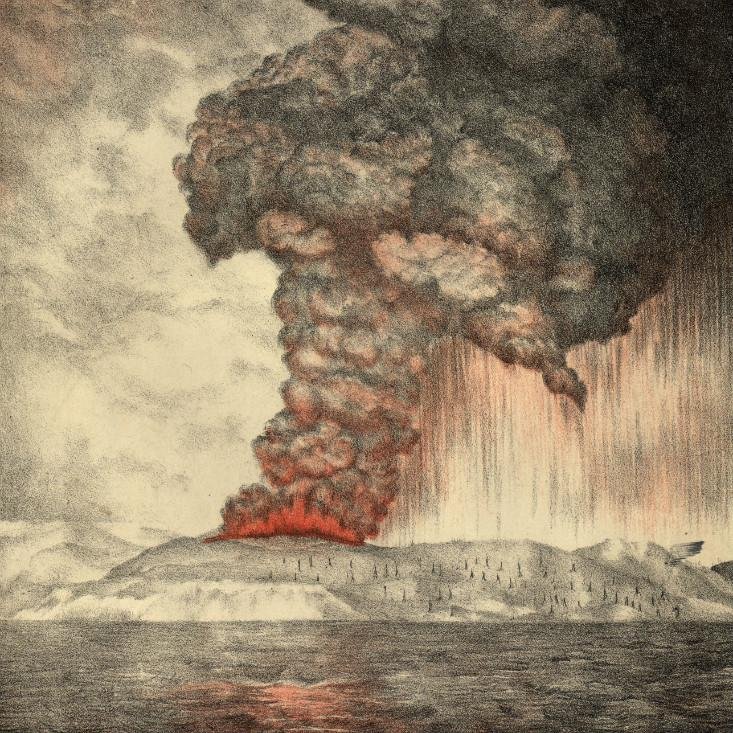
What is the loudest noise you can imagine? The human ear’s pain threshold is near 130 decibels. For comparison, a jackhammer puts out about 100 decibels, and a jet engine comes in at about 150 decibels. Yet there was a sound that was measured at least 172 decibels 100 miles from the source.
This source was the island of Krakatoa, between Java and Sumatra in Indonesia. On 27 August 1883 at 10:02 a.m., a volcano tore the island apart, sending a plume of smoke 17 miles into the atmosphere, which converted to an ejection speed at over 1,600 miles per hour.
The eruption’s effects were gigantic in every way. The tsunami it generated had waves over a hundred feet high. One hundred sixty-five coastal villages and settlements were entirely destroyed. Estimates of the death toll ranged from an official 36,417 to over 120,000. The captain of the British ship Norham Castle, 40 miles away, wrote in his log, “So violent are the explosions that the ear-drums of over half my crew have been shattered.” In total, it was heard at 50 geographic locations, including the Indian Ocean island of Rodrigues, 3,000 miles away.
But the most amazing fact about the eruption was that the air-pressure waves it generated circled the globe three to four times in each direction. Also, tidal stations as far away as India, England, and San Francisco measured a rise in ocean waves synchronized with this atmospheric wave. Even though the sound could no longer be heard, its movement could be tracked around the world.
This has to be the loudest sound in recorded history. And we all had better hope it stays the record-holder.
For more detail, see “The Sound So Loud That It Circled the Earth Four Times” by Aatish Bhatia (https://getpocket.com/explore/item/the-sound-so-loud-that-it-circled-the-earth-four-times). The illustration came from that article.
